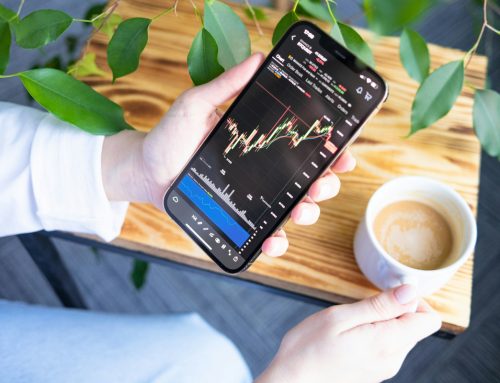Of all the different ways to make money with options, selling covered calls has become increasingly popular for its consistency and ease of implementation. It’s a great way to earn supplemental income on a stock you own that isn’t moving much.
But, let’s get more specific. What is the average return selling covered calls? A quick scan of the web will reveal that some set their sights as high as 40%, but the truth is, there is probably more to the story. A more realistic, sustainable range for covered call returns is somewhere between 10-20%.
Learn more about how to calculate covered call returns below, including all the different components that contribute to the returns you earn through covered calls – premium, stock appreciation, and dividends.
We’ll also walk you through how to set yourself up for success with options trading through the VectorVest stock analysis software paired with OptionsPro.
The Basics of Covered Calls
First things first, what is a covered call? This is a popular options trading strategy that combines owning a stock with selling call options on that stock. In saying that, you need to know a bit about how stock options work to understand covered calls.
Purchasing an options contract gives you the right, but not the obligation, to buy or sell an underlying stock at a pre-determined price (known as the strike price in options in options) before a pre-determined date (known as the expiration date).
If you aren’t already familiar with the difference between a call vs put, that’s important as well. We’ll just focus on call options for the sake of this conversation. These types of options give the holder the right to buy a pre-determined stock at the strike price before expiration.
Now, let’s zero in on how selling covered calls works. You’d need to own shares of a particular stock, which would be your “covered” position. You then sell (or “write”) a call option against those shares, which earns you income known as “premium.”
But what happens when options expire? If the stock price remains below the strike price, the option expires worthless, and you keep both your shares and the premium. This is the ideal scenario from the perspective of someone writing covered calls for income.
However, if the stock price exceeds the strike price, you may have to sell your shares at the strike price, potentially missing out on further gains. You would still earn a profit, but you’d have to deal with the opportunity cost of simply owning the shares outright.
In saying that, this is a great strategy in a stable or slightly bullish market where large price swings are not expected. This way, you don’t have to stress as much about capping the upside of your investment.
How to Calculate Covered Call Returns
Before you learn how to sell options through a covered call strategy you want to set your expectations. So, what is the average return selling covered calls? Not so fast – first, we need to talk about how to calculate covered call returns.
There are primarily two moving pieces you need to consider in calculating returns: the premium received from selling the call option and any capital gains if the stock price appreciates before the option is exercised.
Premium income varies depending on the strike price, the stock in question, and the expiration date. We’ll talk more about this later on, but let’s say you earn $2/share on 100 shares – that’s $200 in premium.
Now, you’ll be forced to sell the shares at the strike price if the stock price increases above it. The capital gain is the difference between the strike price and the original purchase price of the stock.
To get your total return, you’d simply add the premium earned and capital gains together. Then, divide that number by the initial investment to get the return percentage. Sounds complex, but we can break it down in clearer terms through a quick example:
- Purchase Price: $50 per share
- Strike Price: $55 per share
- Premium: $2 per share
- Number of Shares: 100
Premium Received + Capital Gain) / Initial Investment × 100 = Total Return
Or in the case of our example,
($200 + $500) / $5,000 = 14%
This works out to a return of 14% – that’s pretty good! But is this the type of covered call returns you should expect yourself? Let’s take a look at the average return selling covered calls below.
What is the Average Return Selling Covered Calls?
Just like with trying to determine realistic swing trading returns, there are so many moving pieces in covered call returns. Let’s start there.
Every covered call you write will be different because the market conditions influencing stock prices are constantly evolving. Here are some of the factors you need to understand:
- Volatility of the Underlying Stock: Higher volatility generally leads to higher premiums for the options sold, which can increase potential returns. However, it also means a higher risk that the stock price could exceed the strike price, leading to the shares being called away.
- Strike Price and Expiration Date: A strike price closer to the current stock price (at-the-money) typically results in higher premiums but reduces capital gains potential on the underlying stock. Similarly, extended expiration dates tend to yield higher premiums but lock you into the position longer, potentially missing out on larger moves in the stock price.
- Market Conditions: We mentioned already you can earn consistent returns in a stable or slightly bullish market. But, the opportunity cost of selling covered calls can be high in a bullish market since the stock could appreciate well beyond the strike price, capping your gains.
- Dividend Payments: Stocks that pay dividends can influence the returns on covered call strategies. Dividend payments are typically factored into option pricing, and the timing of payouts relative to the expiry date can impact the decision to sell a covered call.
All things considered, what is the average return selling covered calls? We believe aiming for 1-2% monthly returns (12-24% annually) is a fairly reasonable target. In comparison with other stock investment strategies it might not be the most exciting, but it’s sustainable and low risk.
That being said, is there anything you can do to increase your covered call returns?
Tips on Increasing Your Covered Call Returns
Whether you’re selling long calls vs covered calls, we want to empower you with a few ways to stack the deck in your favor to earn higher returns through premium without necessarily raising the chances of having your stocks called away by the option holder.
Stock Selection Criteria
We mentioned earlier that stocks with moderate to high volatility will earn you more premium, but there’s a fine line here. These are also more likely to end up in the money at some point before the option’s expiration date.
This is why an understanding of implied volatility, or IV in options trading, is so important. You can toe the line between earning maximum premium income without subjecting yourself to downside by using this concept to your advantage.
It’s also a good idea to only sell covered calls on stocks you want to hold long-term. This could be high dividend stocks, for example – or it could be blue chip stocks.
If you’re looking for the best stock picker, consider the VectorVest stock advisory. It’s a proprietary stock rating system that simplifies your trading strategy by taking complex technical and fundamental data for a stock and distilling it into clear, actionable insights.
You’re given a buy, sell, or hold recommendation for any given stock to help you consistently pick the best stocks for covered calls in 2024. Get a free stock analysis and see how it works.
Optimizing Strike Price and Expiration Dates
You know now that the strike price and expiration date will be the biggest influencing factors of your covered call returns. You can play around with these to find the sweet spot where you maximize returns without putting yourself at risk of having to sell your shares.
Selecting a strike price close to the current stock price (at-the-money) will yield higher premiums but limits the upside potential of the stock. Alternatively, you could choose a slightly out-of-the-money strike price for some capital appreciation while still generating income.
As for expiration dates, shorter durations (weekly or monthly) allow for more frequent premium collection and adjustments based on market conditions. Just be aware that configuring your expiry dates to be too short will mean you earn less premium.
Your risk tolerance, investment horizon, and market outlook will all play a part in picking your strike price and expiration dates. The OptionsPro integration with VectorVest has some unique tools to assist with this.
For example, the Options Skew graph displays implied volatility in a manner where you can find the best value from a premium perspective, comparing different strike prices and expiration dates on the same chart.
There are also probability envelopes that help you get a better sense of what your odds are so you can tip the scale in your favor. Spread traders love using it to see which combination of strike price and expiration date will deliver the best chance of success.
Utilizing Technical Analysis
Whether you’re writing covered calls or simply building a stock portfolio, you need to be using technical analysis to time your trades effectively, finding the perfect time to enter and exit any position.
Use the best stock indicators for this, such as RSI (Relative Strength Index), and MACD (Moving Average Convergence Divergence) to identify optimal entry points for selling calls.
Understanding how to do technical analysis of stocks will also assist in identifying potential resistance levels where stock prices may stall, making it an ideal time to write a covered call.
So, find more resources on learning technical analysis of stocks in our blog – like how to combine fundamental and technical analysis or Nasdaq technical analysis.
But whether you need the best stock apps for iPhone or the best stock apps for Android, remember that VectorVest can help you make more calculated, emotionless investment decisions. It’s the # investment app for beginner traders and experts alike.
Rolling Covered Calls
Rolling covered calls involves closing an existing covered call position and opening a new one, usually with a different strike price or expiration date.
It’s a great method for risk management options trading and locking in profits if the underlying stock price is approaching the strike price and you’re worried about your shares being called away.
Rolling up to a higher strike price allows you to capitalize on further potential gains, while rolling forward to a later expiration date enables you to collect additional premiums over time.
Final Thoughts on the Average Return Selling Covered Calls
We hope you have a better understanding of now just the average return selling covered calls, but what you can do to stack the odds in your favor and enjoy all the benefits of trading stock options while minimizing the downside.
Our blog has more resources if you want to learn options trading in depth. That includes what it means to exercise stock options, warrants vs options, how are options taxed, trading futures vs options, why covered calls are bad, covered call ETFs, taxes on covered calls, and more.
But with the best stock analysis app just a few clicks away, the only thing to do now is set yourself up for success earning higher covered call returns with VectorVest.
VectorVest empowers you to make informed, strategic decisions in your investment journey with advanced analytics and real-time data. See what it can do for your returns today!







Leave A Comment